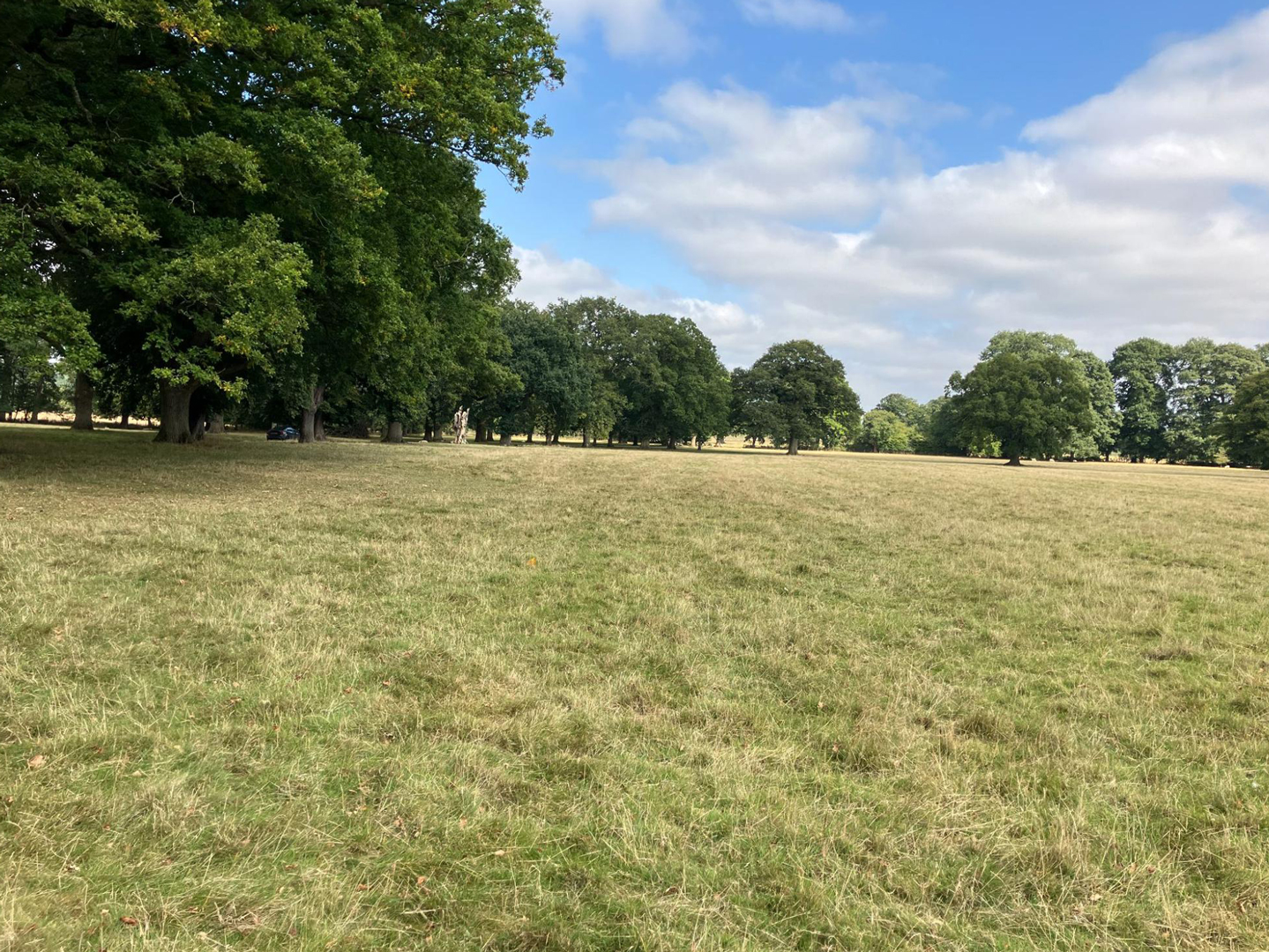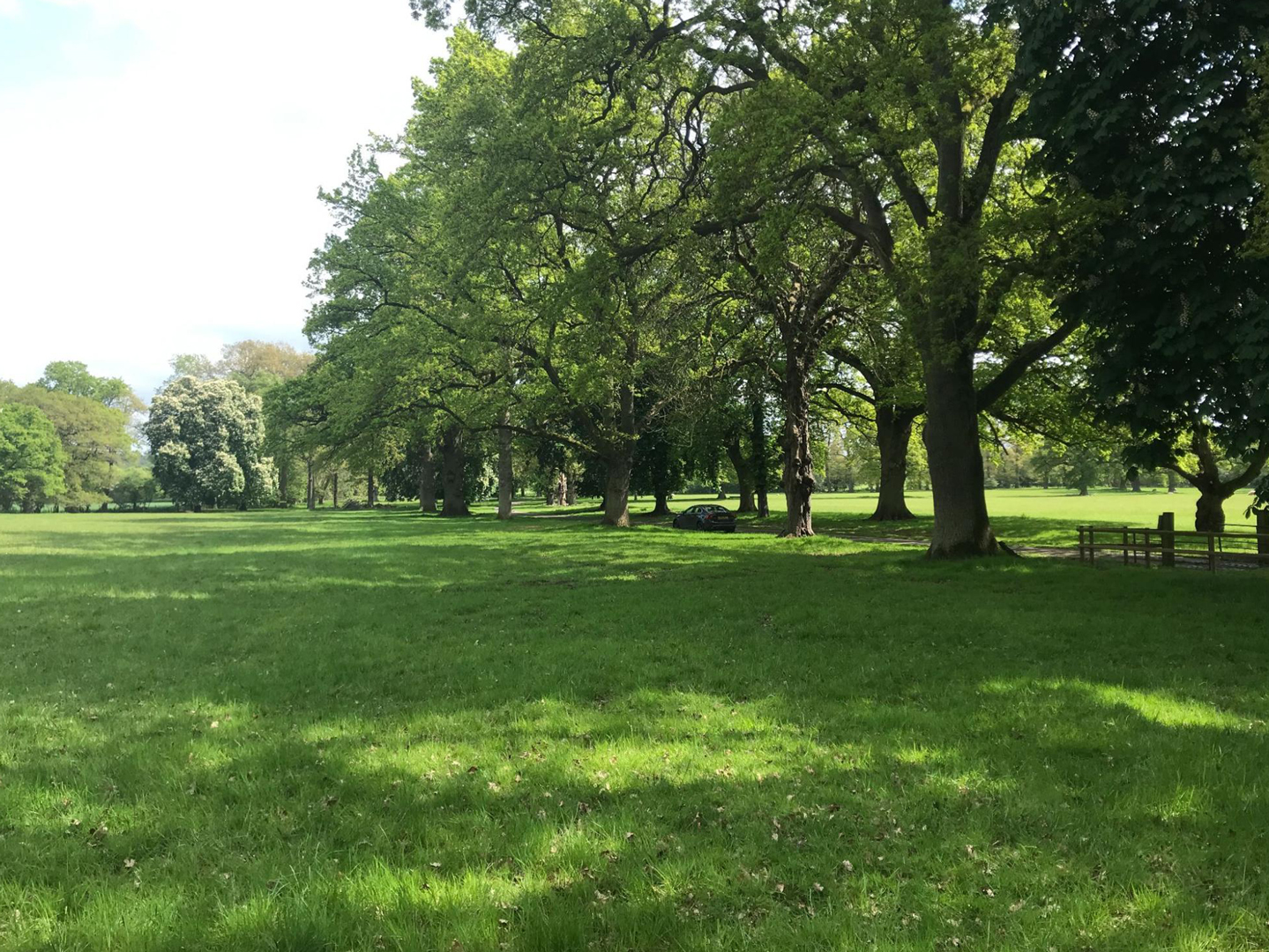At Civity, we’re proud to offer BNG units from one of Warwickshire’s most exceptional sites – Edstone Park. As leading specialists in Biodiversity Net Gain (BNG), we’ve carefully developed this 200-year-old parkland into a model for how heritage and ecology can work in harmony.
This remarkable transformation hasn’t happened overnight. Working with ecological surveys, heritage assessments, and careful management planning, we’ve unlocked the site’s potential to deliver both biodiversity gains and heritage preservation in a sensitive manner.
A Living Ecological Treasure
The site comprises permanent pasture that is at least 200 years old, supporting several areas of ridge and furrow and numerous mature trees that have witnessed centuries of change. What makes this location particularly special from an ecological perspective is that the entire site is classified as a very high distinctiveness UK Priority habitat: wood-pasture and parkland – a designation that speaks to its exceptional ecological and historical value.
A detailed survey of all trees on site confirmed the site supports 163 trees and tree groups, creating a mosaic of features that support diverse wildlife communities. Among these, six trees are potentially ancient, and 17 are veteran – living monuments that provide irreplaceable niches for countless species. These ancient and veteran trees are not just botanical specimens; they’re entire ecosystems in themselves, supporting rare lichens, fungi, and invertebrates and providing crucial breeding and resting sites for birds and bats.
The site supports several protected and notable species, creating a haven for wildlife in an increasingly fragmented landscape. Regular sightings include bats using the veteran trees for roosting, brown hare grazing in the historic pastures, and even evidence of otter along the adjacent watercourse. Badgers have established evidence within the parkland, while hedgehogs – increasingly rare in the British countryside – find refuge in the diverse habitat mosaic.
Sustainable Management Meets Conservation
The habitats at the site are well looked after, with the trees regularly inspected and tended by arboriculturalists as necessary, and the grassland grazed responsibly. This careful stewardship has maintained the site’s ecological value over the decades, but BNG funding now offers the opportunity to enhance it further.
BNG funding will allow for additional tree planting to replace historic losses, ensuring the parkland’s tree population remains robust for future generations. Perhaps even more significantly, BNG funding will also allow for the grazing intensity and duration to be reduced, acting as replacement income to enable a return to a historical rotational grazing management rotation that lets grasslands become tall and flower-rich in summer. This approach mirrors traditional land management practices that created the biodiversity-rich landscapes we’re now working to protect.
The soil conditions are optimal for enhancing the biodiversity of the existing pastures, with elevated levels of organic matter (likely due to the old age of the grassland itself) and low levels of available phosphate. These conditions are increasingly rare in modern agricultural landscapes, where decades of intensive modern farming have often led to nutrient enrichment that reduces botanical diversity.
The site lies adjacent to a local wildlife site watercourse, which is to be fully protected by the proposals, with the riparian corridor enhanced by scrub planting and improvements to the species-richness of the grass. This creates vital wildlife corridors that connect habitats across the wider landscape.

A Window into Edstone's Past
The historical significance of this site adds another layer of importance to its conservation. Obtaining EIA (Agriculture) 2006 regulations screening decision required a closer look at historic and archaeological heritage assets to ensure we were not negatively impacting them. To this end, Derek Cater at Network Archaeology was commissioned to undertake a Historic Landscape Assessment, revealing a fascinating story of continuous human occupation and land use.
The parkland is around 200 years old, designed and laid out in the early 1800s during the height of the English landscape park movement. The parkland is recorded as a heritage asset for the site of the former Hall and its parkland grounds. Other heritage assets listed by Warwickshire Historic Environmental Record (HER) at the site include: ridge and furrow fields and a deserted medieval settlement, painting a picture of centuries of agricultural and social history.
The grounds contained a medieval village, which is now a subterranean archaeological feature with no above-ground remains, preserved beneath the parkland turf. This hidden history adds depth to our understanding of the site’s long relationship with human settlement and land use.
A large hall was constructed in the 19th Century: Edstone Hall, which became the centrepiece of the designed landscape. After a brief spell as a hotel, the hall was demolished in the 1930s and rebuilt as a church study campus, reflecting the site’s evolving role in the community over time.
The park includes several listed buildings, ridge and furrow fields, pleasure grounds, medieval halls and a serpentine lake – features that tell the story of changing fashions in landscape design and land use over the centuries.
Harmonising Conservation Goals
What makes this BNG project particularly successful is how the ecological features were sensitively designed to avoid severe impacts on the various heritage assets. The proposals will overall provide a beneficial impact on the parkland in respect of the proposed tree planting, which is appropriate to the existing landscape character and will replace trees that were originally present but have since died or been removed without replacement.
This approach demonstrates that biodiversity enhancement and heritage conservation are not competing objectives but complementary goals. By understanding and respecting the site’s historical development, the BNG scheme enhances both its ecological and cultural value.

Looking to the Future
This site represents a model for how BNG can work in practice – not as a burden on landowners or a box-ticking exercise for developers, but as an opportunity to restore and enhance our most precious landscapes. By combining ecological expertise with historical understanding and supporting it with appropriate funding mechanisms, we can ensure that sites like this continue to provide benefits for wildlife, people, and our cultural heritage for generations to come.
The success of this project lies not just in the biodiversity units it will generate, but in its holistic approach to landscape management. It shows that when we value both nature and heritage, when we understand that the two are often inseparable, we can create outcomes that benefit everything and everyone involved.
As we move forward with BNG implementation across the country, sites like this historic Warwickshire parkland light the way, showing how careful planning, respect for heritage, and ecological ambition can combine to create landscapes that are richer, more diverse, and more resilient than ever before.
BNG Units Available at Edstone Park
This exceptional site is now officially registered on the national BNG register. The registration demonstrates compliance with national BNG standards.
For developers seeking high-quality BNG units from a site that combines ecological excellence with heritage preservation, Civity offers units from Edstone Park. You can find out more about BNG units for sale at Edstone Park and how purchasing these units supports the long-term conservation of this remarkable landscape.
As an authorised BNG provider, Civity offers premium units from Edstone Park. Our ecological expertise ensures your investment delivers both compliance and genuine environmental benefit.


